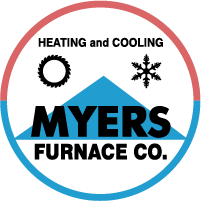When the weather starts to cool off, you might be concerned about how you’ll take full advantage of your heating and cooling. After all, HVAC bills routinely make up a significant piece of your monthly electric bill. To try and find ways to lower their HVAC bill, some owners look closer at their thermostat. Maybe there’s a setting they should use to boost efficiency?
The majority of thermostats have a ‘Fan’ or ‘Fan On’ setting. But if the fan is going during a typical cycle, what does the fan setting provide for an HVAC system? This guide should help. We’ll walk through just what the fan setting is and when you can use it to save money over the summer or winter.
My Thermostat Has a Fan Setting?
For the bulk of thermostats, the fan setting signifies that the system’s blower fan remains on. A few furnaces may continue to generate heat at a low level with this setting, but for the most part heating or cooling isn’t being made. The ‘Auto’ setting, on the other hand, will turn on the fan over a heating or cooling cycle and shut it off after the cycle is complete.
There are advantages and disadvantages to switching on the fan setting on your thermostat, and what’s ideal {will|can|should]] depend on your distinct comfort needs.
Advantages to trying the Fan/On setting:
- You can keep the temperature in every room more balanced by allowing the fan to keep circulating air.
- Indoor air quality will be highest since constant airflow will keep forcing airborne pollutants through the air filter.
- A smaller number of start-stop cycles for the HVAC fan helps lengthen its life span. Since the air handler is often a component of the furnace, this means you could avoid needing furnace repair.
Disadvantages to switching to the Fan/On setting:
- A continuous fan will likely add to your energy bills slightly.
- Continuous airflow could clog your air filter up more quickly, increasing the frequency you’ll need to replace it.
{Choosing Between|Should My Thermostat Be on|Which Setting for My Thermostat? Fan or Auto in Summer/Winter
During the summer, warm air may stick around in unfinished spaces like the attic or an attached garage. If you use the fan setting, your HVAC system can pull this warm air into the rest of your home, forcing the HVAC system to run longer to maintain the desired temperature. In extreme heat, this could lead to needing AC repair more regularly as wear and tear grows.
The opposite can happen over the winter. Cooler spaces like a basement will hold onto cooler air, which will eventually flow into the rest of your home. Leaving the fan setting on may pump more cold air upward, increasing the amount of heating you need to keep warm.
If you’re still trying to decide if you should use the fan/on setting, remember that every home and family’s comfort needs are different. Leaving the HVAC system’s fan on could be ideal for you if:
Someone in your household has allergies. Allergies and other respiratory conditions can be tough on the family. Leaving the fan on should help to improve indoor air quality, helping your family breathe easier.
Your home deals with hot and cold spots. Lots of homes wrestle with difficult hot and cold spots that quickly shift to a temperature different from the rest of the house. The fan setting can help lessen these changes by steadily refreshing each room’s supply of air.
